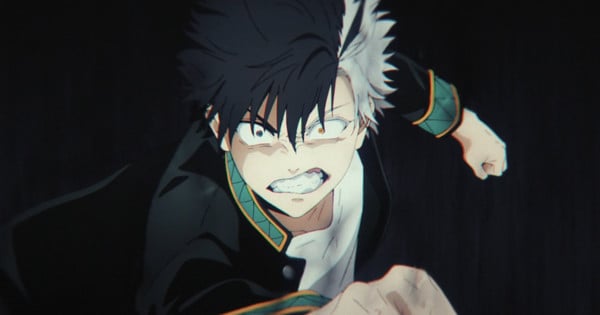Curated From www.animenewsnetwork.com Check Them Out For More Content.
How would you rate episode 1 of
Wind Breaker ?
Community score: 4.4
How would you rate episode 2 of
Wind Breaker ?
Community score: 4.2
How would you rate episode 3 of
Wind Breaker ?
Community score: 4.5

© にいさとる・講談社/WIND BREAKER Project
It’s fair to say that the nascent Delinquent Anime Renaissance has had its struggles. While the Tokyo Revengers anime was a huge success for its source material, as a standalone product, it had a lot of issues – mainly coming down to piss-poor production and pacing that made the Namek Saga seem brisk by comparison. Last season’s Bucchigiri?! had all the parts for a brawlin’ good time but assembled those pieces with all the grace and consideration of a heavily concussed 10th grader. So here’s hoping that the third time’s the charm when it comes to anime boys beating the ever-loving hell out of each other.
Wind Breaker‘s certainly made a strong start. The first episode was a blast from start to finish, delivering all the sumptuously animated beatdowns you could hope for while also endearing us to our protagonist. Haruka is a big old bundle of defense mechanisms, primed by his upbringing to expect hostility when interacting with anyone. It makes it so funny – and charming – when the kindhearted population of Furin treats him like the nice young man he is underneath. The armor he’s built up over his life keeps getting bypassed by kindly old people giving him candy, and the local shop keeps greeting him like a minor superhero. There’s just something inherently lovable about a kid who’s so guarded having to adapt to life as the Friendly Neighborhood Delinquent, and that did as much to win me over as the excellent action animation.
Though at first blush, the twist of Bofurin being popular and beloved by the townsfolk seems at odds with your typical delinquent anime. While our bad boy protagonists always harbor secret hearts of gold, part of the archetype’s appeal is how they chafe against the patronizing conformity of society at large. Whether it’s principles, teachers, police, or parents, there’s typically some kind of authority for them to fight, all the while proving they’re the real good guys and providing a fantasy about performing real, personal justice in a hypocritical world. Having your bad boys help old ladies cross the street and paint over graffiti is funny, but isn’t it also betraying the anti-hero subtext at the heart of it all?
The knee-jerk answer is “probably,” but I think the show has done enough legwork to justify a more nuanced take. The other half of anime delinquency’s appeal is how the heroes are, well, still heroes. They use their strength and fighting prowess to confront the wrongs that corrupt or derelict systems of authority don’t, be it protecting people from other delinquents or offering sanctuary to others rejected by society. In that respect, what Bofurin represents is simply a more organized, collective implementation of that idea. By giving this collection of meatheads a sense of unity and purpose, Umemiya has become a community organized for wayward youth, by wayward youth. It feels a little cheesy to put it that way, but it’s a pretty neat direction to take the genre, with potentially something to say about what it means to “fit in” with a community and how we even define delinquency as a society. Hell, with the seeming lack of police – or teachers, for that matter – we could even get into some discussion of community-focused anarchism. I don’t expect to see Bofurin tending community gardens or building collective housing, but, y’know, they could!
While it’s yet to be determined how well it holds up the anti-hero half of anime delinquency, Wind Breaker has the violence on lock. These opening episodes feature some damn good fights, communicating not just the physical prowess of Haruka and his new crew but also the visceral brutality with which they wield it. While there’s some definite exaggeration for impact – Sugishita turns a school desk into a metal and wooden pancake with a single blow – it’s still relatively grounded, making each impact feel more, well, impactful. Even in scenes with more conservative animation, you can feel the weight and heft behind punches or see the light-footed agility in a dodge, selling you on the power of each fighter through sheer physicality. It’s a pristine level of polish, so here’s hoping it can keep up at least some of that energy throughout the season.
The boys throwing those punches are pretty fun too. Haruka and Akihiko make for a likable dynamic duo, our protagonist always raring for a brawl. At the same time, the timid Ahikiho stands on the sidelines and provides flavor commentary or else tries to talk some sense into his punch-happy new friend. The rest of Bofurin haven’t been fleshed out beyond basic gimmicks yet, but they work as a fun collective, showing off different quirks while still feeling like believable teenagers. My favorite non-fight moment probably comes when Haruka notes how odd it is to shake hands and have casual, physical contact with people after years of only ever touching others with clenched fists. It speaks to the level of isolation he’s endured while highlighting how natural having somebody to literally lean on can feel. It’s a great foundation, so while it remains to be seen how it handles its larger ideas, Wind Breaker has rock-solid footing to start off.
Rating:
Wind Breaker is currently streaming on
Crunchyroll.

